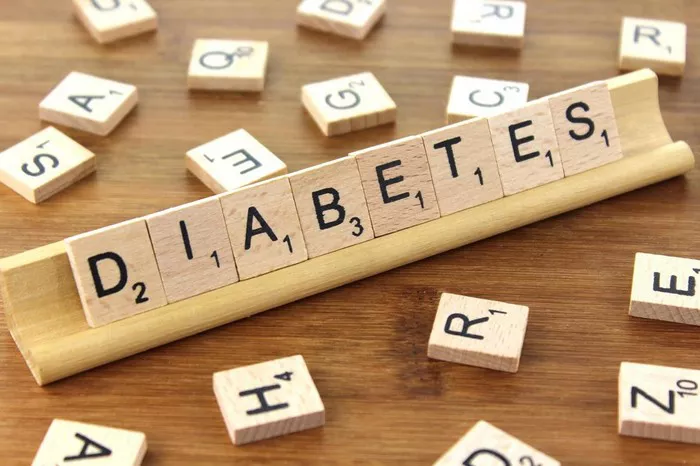Insulin resistance is a condition where cells in the body become less responsive to the hormone insulin, which plays a crucial role in regulating blood sugar levels. When cells resist insulin’s effects, the pancreas compensates by producing more insulin to maintain normal blood glucose levels. Over time, this can lead to higher insulin levels in the blood and, eventually, to type 2 diabetes if the body can no longer produce enough insulin to overcome the resistance.
Understanding Insulin Resistance
Insulin resistance is often associated with obesity, physical inactivity, and unhealthy eating habits, although genetic factors and certain medical conditions can also contribute. It is considered a key factor in the development of metabolic syndrome, a cluster of conditions that increase the risk of heart disease, stroke, and type 2 diabetes.
Why Test for Insulin Resistance?
Testing for insulin resistance is crucial for several reasons:
- Early Detection: Identifying insulin resistance early allows for interventions that can prevent or delay the progression to type 2 diabetes and its associated complications.
- Individualized Treatment: Knowing a patient’s insulin resistance status helps healthcare providers tailor treatment plans to target underlying metabolic abnormalities and improve outcomes.
- Monitoring Progress: Regular testing can track changes in insulin sensitivity over time, guiding adjustments in treatment and lifestyle interventions.
Methods for Testing Insulin Resistance
There are several methods used to assess insulin resistance in clinical practice. Each method has its advantages, and the choice of test depends on factors such as availability, cost, patient characteristics, and the clinical setting.
Fasting Insulin Levels
Description: This test measures the level of insulin in the blood after an overnight fast. It provides an indirect assessment of insulin resistance, as higher fasting insulin levels are typically associated with insulin resistance.
Procedure: A blood sample is taken after an overnight fast (usually 8-12 hours). The insulin level is measured using a laboratory assay.
Interpretation: Higher fasting insulin levels (usually above 15 μU/mL) indicate greater insulin resistance.
Advantages: Simple to perform, relatively inexpensive, and widely available.
Limitations: Fasting insulin levels can vary based on factors such as diet and stress. It may not capture changes in insulin sensitivity throughout the day.
Fasting Blood Glucose and Insulin (Homeostasis Model Assessment – HOMA-IR)
Description: HOMA-IR calculates insulin resistance using fasting blood glucose and insulin levels. It provides an estimate of insulin resistance based on a mathematical model.
Procedure: Requires fasting blood samples for both glucose and insulin. The HOMA-IR index is calculated using the formula: HOMA-IR = (Fasting Insulin (μU/mL) × Fasting Glucose (mmol/L)) / 22.5.
Interpretation: A higher HOMA-IR index indicates greater insulin resistance. Typically, a HOMA-IR index above 2.5 is considered indicative of insulin resistance, but this can vary based on population and laboratory norms.
Advantages: Non-invasive, relatively inexpensive, and provides a quantitative measure of insulin resistance.
Limitations: Assumes a stable fasting state and does not account for dynamic changes in insulin sensitivity throughout the day. Interpretation may vary based on ethnic or population differences.
Oral Glucose Tolerance Test (OGTT)
Description: The OGTT measures blood glucose and insulin levels before and after consuming a glucose-rich drink. This test assesses how the body responds to a sudden increase in blood glucose, providing insights into insulin secretion and sensitivity.
Procedure: After an overnight fast, a baseline blood sample is taken. The patient then drinks a glucose solution, and blood samples are taken at intervals (usually 30 minutes, 1 hour, and 2 hours) to measure glucose and insulin levels.
Interpretation: Higher insulin levels during the test suggest greater insulin resistance. The glucose and insulin response curve helps assess how effectively the body handles glucose.
Advantages: Provides a dynamic assessment of insulin sensitivity and can detect early abnormalities in glucose metabolism.
Limitations: Requires several blood draws over a few hours, which can be cumbersome. Results can be affected by factors such as diet and stress.
Insulin Clamp Technique (Gold Standard for Research)
Description: The euglycemic hyperinsulinemic clamp is considered the gold standard for measuring insulin resistance in research settings. It involves infusing insulin into the bloodstream at a constant rate to maintain a steady elevated insulin level while glucose infusion is adjusted to maintain normal blood glucose levels (euglycemia).
Procedure: Intravenous catheters are placed to infuse insulin and glucose solutions. Blood samples are taken regularly to measure glucose levels and calculate the glucose infusion rate needed to maintain euglycemia.
Interpretation: The glucose infusion rate required to maintain euglycemia correlates inversely with insulin sensitivity. Higher infusion rates indicate greater insulin resistance.
Advantages: Provides a direct measure of insulin sensitivity without relying on mathematical models. Precise and reproducible results in controlled research settings.
Limitations: Invasive procedure requiring specialized equipment and expertise. Not feasible for routine clinical use due to complexity and cost.
Who Should Get Tested for Insulin Resistance?
Several factors increase the likelihood of insulin resistance and may warrant testing:
- Obesity: Especially abdominal obesity (waist circumference >40 inches in men, >35 inches in women).
- Family History: A family history of type 2 diabetes or metabolic syndrome.
- Physical Inactivity: Sedentary lifestyle with minimal exercise.
- Ethnicity: Certain ethnic groups (e.g., Hispanic, African American, Native American, South Asian) are at higher risk.
- Medical Conditions: Polycystic ovary syndrome (PCOS), non-alcoholic fatty liver disease (NAFLD), hypertension, and dyslipidemia.
Steps to Prepare for Insulin Resistance Testing
Before undergoing insulin resistance testing, it’s essential to follow these guidelines to ensure accurate results:
Fasting: Many tests require overnight fasting (8-12 hours) to stabilize blood glucose and insulin levels.
Medication: Inform your healthcare provider about any medications or supplements you are taking, as some may affect test results.
Hydration: Drink water as usual unless instructed otherwise by your healthcare provider.
Avoid Stress: Minimize stress before and during testing, as stress hormones can affect blood glucose levels.
Interpreting Insulin Resistance Test Results
Interpreting insulin resistance test results requires comparing them to established norms and considering individual factors such as age, ethnicity, and medical history. Results should be reviewed by a healthcare provider who can provide personalized recommendations based on the findings.
Clinical Implications and Treatment
If insulin resistance is detected, healthcare providers may recommend:
- Lifestyle Modifications: Including regular physical activity, healthy eating habits (e.g., low-fat, high-fiber diet), weight management, and stress reduction techniques.
- Medications: Such as metformin, thiazolidinediones, GLP-1 receptor agonists, or SGLT2 inhibitors, depending on the individual’s health status and response to lifestyle changes.
- Monitoring: Regular follow-up visits to monitor progress, adjust treatment as needed, and prevent complications.
See also: What types of diabetes are suitable for insulin?
Conclusion
Testing for insulin resistance plays a crucial role in the early detection and management of metabolic disorders such as type 2 diabetes. By identifying insulin resistance early, healthcare providers can implement targeted interventions to improve insulin sensitivity, prevent progression to diabetes, and reduce the risk of associated complications. Individuals at risk for insulin resistance should discuss testing options with their healthcare provider to determine the most appropriate approach based on their unique circumstances and health goals. Early intervention and ongoing monitoring are key to maintaining optimal metabolic health and overall well-being.
Related topics:
What Is The Role Of The Pancreas In Diabetes?



























